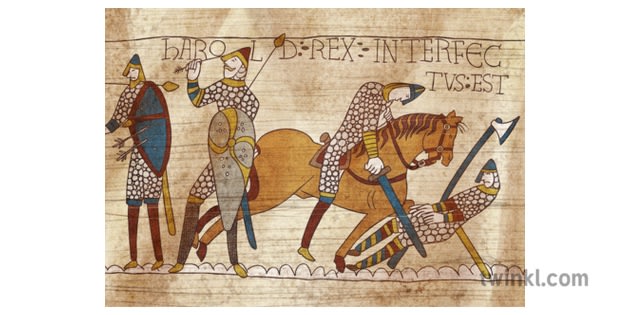
Harold Godwinson was born in 1020, and was the son of a powerful earl called Godwin. Godwin served under King Cnut, and later played an important role in securing the throne for Edward the Confessor. Edward later married Harold Godwinson's sister, Edith, and not long after that Harold become Earl of East Anglia.
In 1053, Harold's father died, and he took his place as Earl of Wessex, making him a very powerful figure in England at the time. In fact, Harold was considered the most powerful person in the country after the King. Harold was a key figure in defending England from attacks by the Welsh and opposing the influence of Norway in England.
At one point after being shipwrecked in France, Harold met with William II, Duke of Normandy. It is believed that during this meeting, Harold promised to support William's claim to the throne of England, since William was a relative of Edward the Confessor.
When did Harold Godwinson become King?
In 1065, Edward the Confessor became ill. Because he had no children, there was confusion over who should be the heir to the throne, as Edward had not directly stated who he wanted to take over from him. Before he died, Edward the Confessor reportedly left the kingdom of England under Harold's 'protection', but it is unknown if this meant he wanted Harold to be King or if he simply wanted Harold to take care of the Kingdom until a new King could be crowned.

Nevertheless, Harold was selected to be the next King by the Witan, a council that convened to decide who would take over after the existing monarch died. Harold was coronated in Westminster Abbey on the 6th of January 1066, and was the first English monarch to be coronated there.
After hearing about Harold's coronation, Duke William II of Normandy was furious and started planning his invasion of England to claim the throne. At the same time, Harald Hardrada of Norway began planning his own invasion of England, as he also believed he had a rightful claim on the crown.
What happened at the Battle of Stamford Bridge?
Harald Hardrada arrived in England first, and defeated the English earls of Mercia and Northumbria. Harold Godwinson's army marched north to meet him, and they fought in the Battle of Stamford Bridge. Before the battle broke out, Harold Godwinson reportedly rode up to Harald Hardrada alone and told his allies that they would be defeated if they did not retreat.
During the Battle of Stamford Bridge, Harald Hardrada was indeed defeated, and both he and his closest ally Tostig were killed. Not long afterwards, Harold Godwinson had to march his army south again, as William, Duke of Normandy had landed his forces in England.
When was the Norman Conquest?
William, Duke of Normandy had sailed his forces over on the 12th of September, but several of his ships sank in a storm and he had to return to the coast of Normandy and try again. He was eventually able to sail across on the 27th of September, and landed on the coast of East Sussex the next day.

Harold Godwinson's army had marched 241 miles and met William's forces near Hastings. What followed was probably one of the most famous battles in history, the Battle of Hastings, which lasted for nine hours. During the battle, Harold Godwinson was killed and his forces were defeated by William II.
What happened after the Battle of Hastings?
It is a common belief that Harold Godwinson died due to an arrow in the eye, but this may not be true as the only evidence of this is the Bayeux Tapestry, a Norman embroidery that shows the battle, which seems to be ambiguous over which figure in the picture is supposed to be Harold. Some accounts of the battle say that Harold was killed by knights, and others say he was killed by William himself.

After the death of Harold Godwinson, William expected the English to surrender, but they did not. In fact, a new king was nominated by the clergy, but William's armies began to take cities and eventually marched on London. Not long after this, William II of Normandy was crowed William I of England, also known by his nickname, William the Conquerer.



Leave a Comment